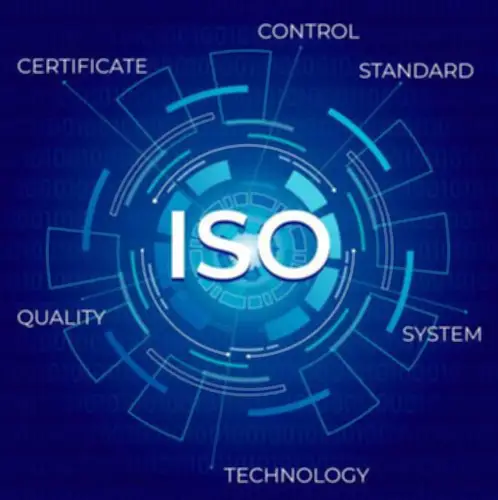Operational Acceptance Testing (OAT) is a software testing approach which evaluates the operational readiness of a software application previous to the release or production. The objective of Operational acceptance testing is making certain system and component compliance and easy system operation in its Standard Operating Environment(SOE). It offers a final checkpoint to ensure that the product meets the desired necessities and is ready for supply. It helps in figuring out any discrepancies or issues that may Front-end web development have been missed during the growth course of. Acceptance Test-Driven Development (ATDD) is a collaborative strategy where developers, testers, and prospects define acceptance standards earlier than coding begins. This methodology helps in creating a shared understanding of the necessities and ensures that the final product meets the consumer’s wants.
Computing Trends Each Business Ought To Know Of
Continuous high quality clouds like LambdaTest might help you check web sites and cellular apps on an internet device farm of 3000+ real browsers, gadgets, and platform combos. Critical software program bugs or defects can end result in business failure of any service or product. Bugs in the software product frustrate the end user and make them go away the software with out utilizing it sooner or later. It is essential to perform the operational testing throughly and accurately to beat these issues. Simulating real-world utilization conditions, including peak hundreds, may be operational testing challenging. Ensuring that the software program performs well underneath these circumstances is crucial for its success in the manufacturing environment.
App Modernization & Cloud Migration: A Methodical Approach To Boost Enterprise
This may be achieved via clear metrics, benchmarks, or performance indicators. It isn’t only about understanding the system functionality however ensuring that you simply execute and implement your testing with utmost precision and readability. It verifies whether or not the software program operates the way it is supposed without disrupting the enterprise course of. According to a current survey, 88% of respondents believe User Acceptance Testing is crucial to attaining high quality goals. However, 29% reported that the quality of software program delivered to UAT was lower than good, highlighting the need of strong UAT processes. • Operational Acceptance Testing reduces downtime, reduces the impression of any failed adjustments, and helps quicker total supply at a reduced cost.
Operational Acceptance Testing Process:

The ultimate objective of every operational acceptance testing (OAT) course of ought to be the pursuit of steady enchancment. Within the extensive realm of software program testing methodologies, Operational Acceptance Testing (OAT) emerges as a distinguished and efficient instrument for guaranteeing operational preparedness. This section represents the conclusive stage of testing that precedes the deployment of the software for practical utilisation. The main objective of the system is to confirm if it fulfils all designated requirements for operation and maintenance. Understanding the concept of Acceptance Testing is crucial for product managers, operations managers, and different stakeholders concerned in the product lifecycle.
Stability Testing In Software Program Testing: Detailed Guide
In dynamic project environments, requirements could change during the acceptance testing phase. Managing these changes and updating check circumstances accordingly may be challenging and may require further effort and time. If the requirements usually are not clearly outlined or are ambiguous, it may be tough to create correct acceptance exams. This can result in misunderstandings and misalignment between the development team and stakeholders.

This helps to keep away from pricey fixes and potential downtime after the software is launched. OAT is essential as a result of it helps to determine and resolve any issues that may affect the system’s availability, stability, and usability in the production surroundings. OAT additionally helps to make sure that the system is suitable with the prevailing infrastructure, processes, and insurance policies of the organization. OAT can forestall expensive and dangerous failures, downtime, and customer dissatisfaction that may outcome from deploying a system that isn’t operationally ready. In the sphere of product administration and operations, Acceptance Testing serves as a crucial checkpoint before the product is delivered to the shopper. It helps in guaranteeing that the product meets the client’s necessities and is prepared for use.
The actual results are retained for comparability with the anticipated results.[9] If the precise outcomes match the anticipated outcomes for every check case, the take a look at case is claimed to pass. If the quantity of non-passing check instances does not breach the project’s predetermined threshold, the test suite is said to move. If it does, the system might both be rejected or accepted on circumstances beforehand agreed between the sponsor and the producer. Before going live, a last sequence of checks that focus on compliance, quality management, person experience, and performance.
- The means of testing evaluates the preparedness of a system for its implementation and utilisation in an genuine operational context.
- And if you’re able to check out a customer suggestions software, Usersnap presents a free trial.
- Operational acceptance testing refers to the formal strategy of evaluating and determining whether or not a system or software utility is prepared for use.
- The software will carry out as anticipated if acceptance exams are successfully passed, giving stakeholders, similar to purchasers, managers, and end customers, confidence in its readiness for deployment.
- The most typical sorts include User Acceptance Testing (UAT), Operational Acceptance Testing (OAT), and Contractual Acceptance Testing (CAT).
Also, evaluate the time it requires to develop a testing script followed by checking your testing devices. Although performed on the final stage of the STLC, OAT brings a myriad of advantages for the testing staff and stakeholders. Bugs may cause important stability and maintenance issues inflicting the app to crash inadvertently, or worse, it could grasp the entire system. This may cause intense frustration amongst customers, stopping them from utilizing the app ever again. And if you’re able to check out a customer feedback software, Usersnap provides a free trial. It captures testing particulars, eventualities, and progress, fostering collaboration and integration with your improvement workflow for iterative improvements pre-release.
The acceptance check will confirm that this characteristic meets person expectations and functions appropriately. Software must pass contract acceptance testing to find a way to meet the specs and necessities outlined in the contract. This type of testing is crucial for making certain that each one contractual obligations are fulfilled before the software is accepted. To plan OAT effectively, you want to define the aims, scope, standards, and strategies of the testing. You also need to determine the roles and obligations of the stakeholders, such as the testers, builders, operators, customers, and managers.
This course of enhances transparency, belief, and project accountability, in the end contributing to profitable project outcomes. He has wide experience in Airlines Technology, Media Broadcasting, and Banking, Financial Services, and Insurance BFSI. In addition to this, he has experience in TL, ata arehouse, Non-Functional Testing, Performance ngineering, System Integration Testing, IT Automation, and Functional, and Regression testing. E has in depth information of BFSI testing with greater than six years of expertise working with a multinational European financial institution.
Regarding mobile apps, operational exams become important in evaluating the app’s general efficiency in the long term. Operational acceptance testing refers back to the formal strategy of evaluating and determining whether a system or software program utility is prepared to be used. The strategy of testing evaluates the preparedness of a system for its implementation and utilisation in an genuine operational context.
You ought to doc the test outcomes and evidence and consider them against the predefined standards. You must also evaluation and validate the test outcomes and recommendations with the stakeholders. Operational acceptance testing serves an important function in verifying the operational readiness and suitability of a system for utilization. This represents a big stride in the pursuit of a software system that displays enhanced quality, increased dependability, and heightened resilience. This optimization can outcome in enhanced outcomes for software deployment endeavors.
Let us try and evaluate these two frequent testing varieties and consider which one to make use of under which scenario. Much like a master cartographer charts out unexplored territories, our check plan must embody all attainable operational scenarios. And in this tumultuous journey, system failures will inevitably rear their heads – but concern not, for our map will also detail the protected harbors of backup protocols. There are several kinds of Acceptance Testing, each serving a specific objective.
Allow time for essential adjustments, ensuring they align with project scope and compliance necessities. Assessing regulatory compliance might include examining information handling and person consent mechanisms inside the app. Regulation acceptance testing (RAT) verifies compliance with relevant laws and trade standards.
Transform Your Business With AI Software Development Solutions https://www.globalcloudteam.com/ — be successful, be the first!
